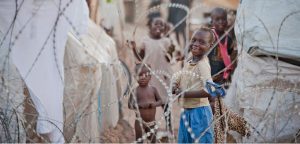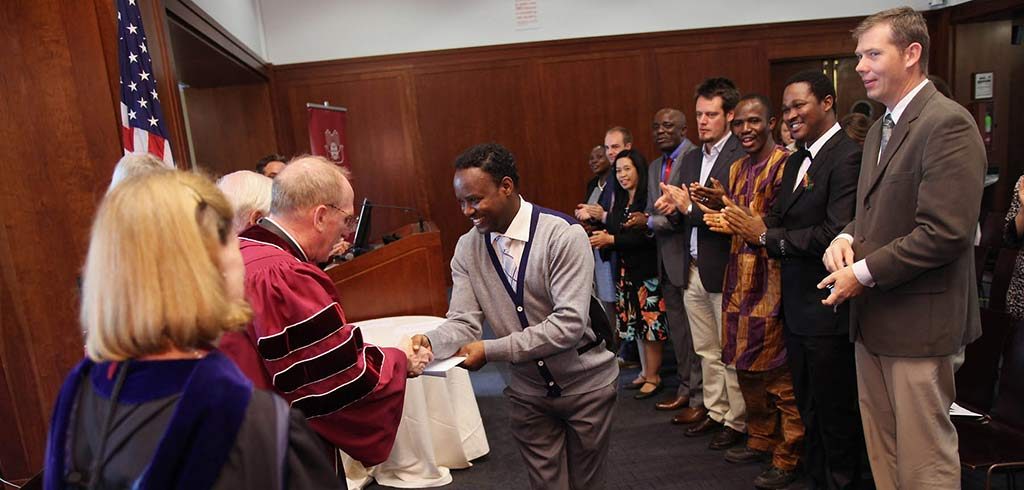As the field of humanitarian studies grows, a team of researchers from Fordham and two other universities has cast a critical eye on the best methods for teaching it to students.
The team of faculty from Fordham, Fairfield University, and Georgetown University published the results of a three-year study, “Collaborative Learning and Innovative Assessment in Humanitarian Studies,” in the journal International Studies Perspectives, and shared the assessment resources with the 28 members of the Jesuit Universities Humanitarian Action Network.
Melissa Labonte, PhD, associate professor of political science at Fordham, said the goal of the study, which was funded by the Teagle Foundation, was to measure the effectiveness of current teaching and to provide guidance for those launching new programs, such as Fordham’s major in humanitarian studies.
“We wanted to improve assessment and understand whether what we think we’re teaching students is reaching them in the ways that we anticipate,” she said.
“At the same time, we want to enhance a networking approach to student learning through a common set of learning objectives.”
One of the assessment tools that the team found encouraging was the vignette, which Labonte said taps into affective learning, centered on feelings.
“It’s not just about learning the ABCs and the 123s of humanitarianism. It’s about attitudinal and affective learning as well. What are your attitudes, and how do they change over time about a particular aspect of humanitarianism?” she said.
This is key, she said, as humanitarian studies is a complex enterprise involving vulnerable populations, and students have to be comfortable “getting into the weeds” of ambiguity and tragedy while also mastering particular skillsets.

Photo courtesy of United Nations Photo Library.
“You can’t just go into a humanitarian crisis with a bunch of tents and food and medicine and say you’ve saved people. It’s not enough,” she said.
“You have to start to understand and develop useful affective tools and skills as a student as much as you have to develop your cognitive skills to really become someone who’s a learned and effective practitioner in the field of humanitarianism.”
One vignette that Labonte shared in her own class on conflict analysis and resolution was the story of how humanitarian aid workers in West Africa exploited beneficiaries of aid. Labonte said it’s important to understand that aid supplies help people in conflicts, but they can also be used in ways that hurt people, too.
For the study, the team conducted a content analysis of students’ answers to questions about the story. In her own class, she found that although most of the victims in the vignette were women and children, and she had assigned a number of gender readings to students, they didn’t quite understand the gendered dimensions of the story.
“When we looked at the ways to counter the kinds of things that can go wrong in a humanitarian crisis—like sexual exploitation and gender-based violence—I thought it would be a straight arrow, point A to point B, and students would have a good handle on this,” she said.
But she said she was surprised that students did not always pick up on the nuances of the gendered dimensions of humanitarianism.
The field of humanitarian work is growing by 6 percent annually, thanks to the increasingly professional nature of the work and greater global attention to those in need. Labonte said there has been a trickle-down effect, as donors increase their demands for better-equipped aid workers.
The expertise and experience of the Institute of International Humanitarian Affairs (IIHA) makes Fordham a valuable resource for the field as a whole, she said.
“Fordham is actually riding the crest of what is a much bigger wave,” she said.
“We’re one of the first institutions in the United States to pay attention to this in a way that I think reflects well on our mission and responds to what are real needs facing the humanitarian profession.”

